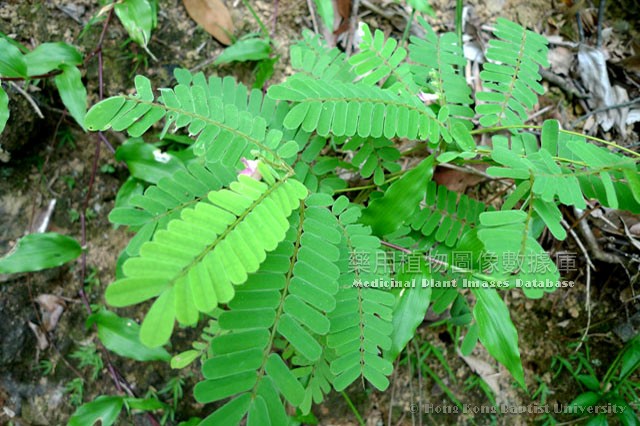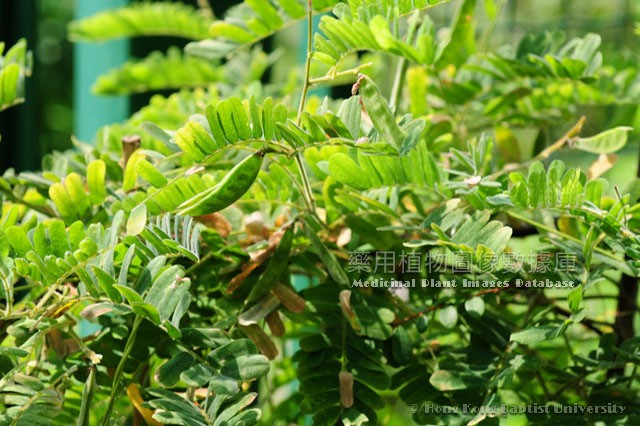|
|
|
Abrus mollis Hance


|
English Name |
Hairy Rosary Pea, Hairy Abrus, Hairy Rosarypea, Hairy Pea |
|
Latin name |
Abrus mollis Hance |
|
Family & Genus |
Fabaceae, Abrus |
|
Description |
Delicate winding vines, whole plant sparsely yellow with expanded long hairs. Fascicled small fibrous roots, pinnate leaves with 20-32 leaflets, alternate arrangement; leaflets oblong, membranous, 2 on uppermost part usually obovate, 1-2.5cm long, 6-8mm wide, apex truncate and with small mucronate, but with small acute, base round or truncate, sparsely hairy above, densely white long hairs below, stipules lanceolate, small stipules subulate; small vein not distinct; stipules extremely small. Raceme axillary, ca. half of the leaves, 3-7cm long, papilionaceous flowers pink, pedicels 2-4cm, flowers 2-3 cluster at the joints of inflorescence; peduncle and rachis have pale yellow long hairs; calyx campanulate and has dense white hairs; stamens 9, filaments combined to one tube; corolla pink or pale purple. Pods oblong, flat, ca. 3-5(6)cm long, long hairs, apex with beak, with 4-9 seeds. Seeds ovate, flat, ca. 5mm long, dark brown or black, slightly shiny. Caruncles small, annular, umbilicuses with hole. Flowering: August, fruiting: September. Fruiting occurs while flowering. |
|
Distribution |
Growing in valleys, roadside thickets of open forests, on sandy soil and seaside highlands. Distributed in south of Fujian, Guangdong, Hainan and Guangxi. The medicinal materials are mainly produced in Guangxi. |
|
Part Used |
Medical part: whole part with roots. Chinese name: Maojigucao. |
|
Harvest & Processing |
Harvested throughout the year, removed sand and legume (toxic), sun-dried. |
|
Properties & Actions |
Taste sweet, tasteless, cool in nature.Eliminating heat and detoxifying, removing dampness through dieresis. |
|
Indications & Usage |
Used for infectious hepatitis, mammary abscess, furuncles, burns and scalding injuries, retarded growth in infants due to malnutrition.Oral administration: decocting, 9-15g. External application: appropriate amount, decocted for washing; or fresh leaves applied in smashed form. |
| Link to |
 Chinese Medicinal Material Images Database Chinese Medicinal Material Images Database
 Chinese Medicine Specimen Database Chinese Medicine Specimen Database
|
|
Permanent URL:https://sys01.lib.hkbu.edu.hk/cmed/mpid/detail.php?herb_id=D01281 |
|
|
|

